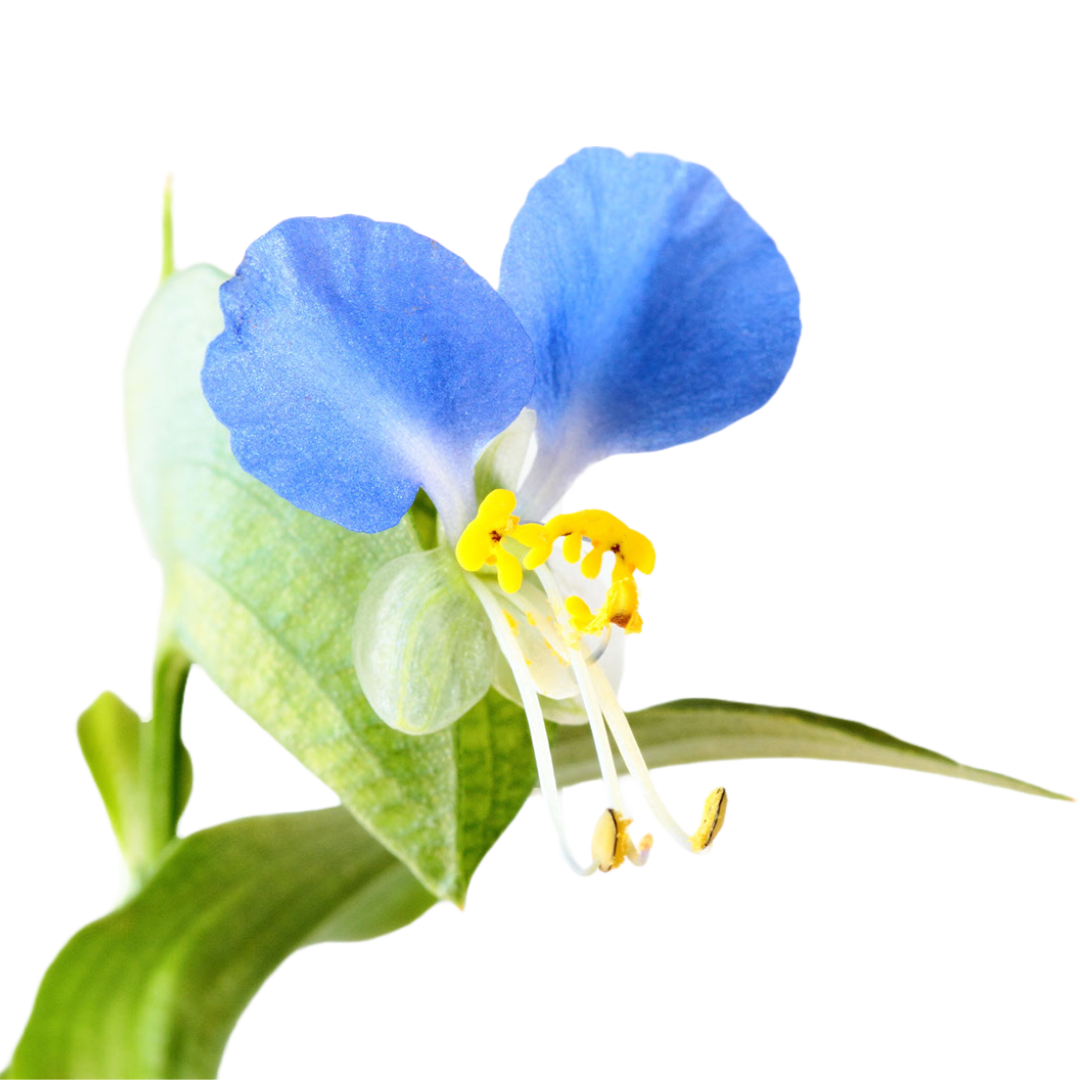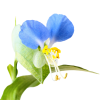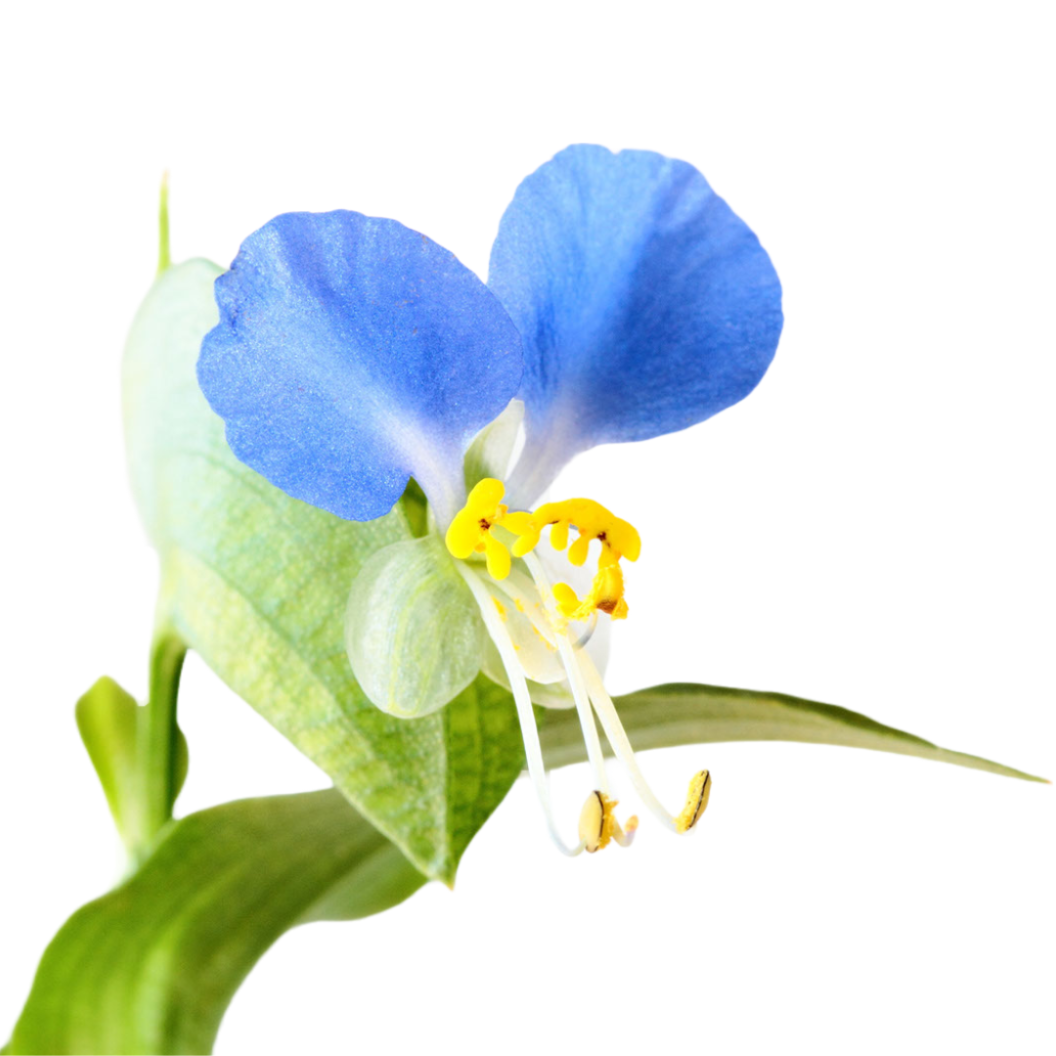




Dayflower
DESCRIPTION: With flowers that only last for one day before they wither away and are replaced by new ones, it's no wonder they call it a dayflower. These plants, which produce blue, white, or pink flowers, are considered a weed in most agricultural settings. They grow fast and have a tendancy to spread quickly, making them difficult to control. They are quite resiliant and can handle a moderate amount of harsh conditions.
SCIENTIFIC NAME: Commelina
OTHER NAMES: Widow's Tears, Asiatic Dayflowr, Tropical Spiderwort, Blue Spiderwort
LEAF TYPE: Broadleaf
FLOWERS: The flowers are small and delicate with petals that are most commonly a vibrant (almost purple) shade of blue. They have a distinctive shape, with three petals that form a triangle, and a small yellow center. The flowers are held on slender stems that emerge from the plant's foliage, and they bloom one at a time. Each flower is only in bloom for one day before it wilts and a new one appears. They are aesthetically pleasing and are particularly attractive to pollinators likes bees.
LEAVES: The leaves are long and thin and somewhat resemble that of a grass blade. They grow in a clump at the base of the plant. They will be a bright, vibrant green color with a smooth texture. They are slightly curved and can grow up to several inches in lenght. One of the more interesting features of the dayflower's leaves is that they have a tendency to fold up along their lengthwise axis in response to changes in light or temperature, giving the plant a more compact, streamlined appearance when conditions are unfavorable.
LIFE CYCLE: Annual & Perennial
HOW TO IDENTIFY: Dayflowers are realtively easy to identify, especially when they are in bloom. Look for a plant with long, slender stems that grow no more than a few feet tall. The leaves are thin and elongated, growing in a clump at the base of the stem. The flowers are small and triangular in shape, with three bright blue petals and a yellow center.
MECHANICAL CONTROL RECOMMENDATIONS:
1. Manual Removal - More Info
2. Digging - More Info
3. Smothering - More Info
4. Repeated Removal - More Info
5. Lawn Mowing - More Info
6. Tilling - More Info
CHEMISTRY RECOMMENDATIONS:
"Pre-emergent herbicides:
Prodiamine: This is a commonly used pre-emergent herbicide that provides good control of a wide range of annual grasses and broadleaf weeds, including Commelina. It's often used in lawns and ornamental beds.
Oryzalin: Another effective pre-emergent herbicide, oryzalin helps prevent the growth of weed seeds by inhibiting cell division. It can be used in both residential and commercial settings.
Pendimethalin: This pre-emergent herbicide works well on many broadleaf and grassy weeds, including Commelina. It's often used in lawns, gardens, and landscapes.
Dithiopyr: Dithiopyr is known for its extended control period and is effective against a variety of annual and perennial weeds, including Commelina. It's often used in lawns and athletic fields.
Isoxaben: While more commonly used for controlling broadleaf weeds in landscapes and ornamental beds, isoxaben can have some effectiveness against Commelina as a pre-emergent herbicide.
Benefin: Benefin is often used for controlling annual grasses and certain broadleaf weeds. It can be used in both residential and commercial landscapes.
Flumioxazin: This pre-emergent herbicide can be effective against both broadleaf and grassy weeds, making it useful for controlling a variety of weed species, including Commelina.
Trifluralin: Trifluralin is a pre-emergent herbicide that can provide good control of certain grassy and broadleaf weeds. It's often used in both agricultural and non-agricultural settings.
Post-emergent herbicides:
Glyphosate: This is a non-selective herbicide that targets a wide range of plants. It's effective in killing most types of vegetation, so be cautious when using it near desirable plants. Glyphosate is often used for spot treatment on individual Commelina plants.
2,4-D: This is a selective herbicide that targets broadleaf weeds while sparing grasses. It's commonly used in lawn care and can be effective against Commelina. Make sure to follow application guidelines to prevent damage to desirable plants.
Dicamba: Another selective herbicide for broadleaf weeds, dicamba is often used in combination with other herbicides. It's important to use dicamba carefully to avoid drift and damage to non-target plants.
Triclopyr: This herbicide is effective against many broadleaf weeds, including Commelina. It's often used for woody plants and can be found in formulations suitable for various applications.
Metsulfuron-methyl: This is a systemic herbicide that's effective against a range of broadleaf weeds, including Commelina. It's often used in areas with established vegetation.
Fluroxypyr: Another broadleaf herbicide, fluroxypyr is used to control a variety of weeds, including Commelina. It's important to read and follow the label instructions.
Clopyralid: This herbicide is selective for broadleaf plants and is commonly used to control weeds in lawns and non-crop areas.
Aminopyralid: This herbicide is known for its persistence and effectiveness against a wide range of broadleaf weeds. However, it's important to be cautious as it can have residual effects on compost and manure.
Selective herbicides:
2,4-D: This is one of the most common selective herbicides used to control broadleaf weeds in lawns and landscapes. It's effective against many types of broadleaf weeds, including Commelina.
Dicamba: Dicamba is another effective selective herbicide for controlling broadleaf weeds. It's often used in combination with other herbicides for enhanced effectiveness.
MCPA: MCPA is often used in lawn care to target broadleaf weeds. It's effective against Commelina and can be used on residential lawns.
Triclopyr: Triclopyr is effective against a wide range of broadleaf weeds, including woody plants. It's suitable for use in lawns, non-crop areas, and more.
Clopyralid: This selective herbicide is known for its efficacy against tough broadleaf weeds. It's often used in turf, non-crop areas, and more.
Fluroxypyr: Fluroxypyr is effective against various broadleaf weeds and can be used in different settings, including lawns and ornamental beds.
Aminopyralid: This herbicide is known for its long-lasting control against certain tough broadleaf weeds. However, use it with caution as it can have residual effects.
Quinclorac: Quinclorac is particularly effective against a range of broadleaf and grassy weeds. It's often used in turfgrass areas.
Sulfentrazone: While primarily used for control of sedges and broadleaf weeds, sulfentrazone can also provide some control of Commelina.
Non-Selective herbicides:
Glyphosate: Glyphosate is one of the most well-known non-selective herbicides. It's effective against a wide range of plants and is commonly used for spot treatment of individual weeds, including Commelina. It's important to use glyphosate with care to avoid affecting nearby plants.
Glufosinate: Glufosinate is another non-selective herbicide that targets a variety of plants, including Commelina. Like glyphosate, it's important to use glufosinate judiciously to prevent unintended damage to non-target plants.
Diquat: Diquat is a contact herbicide that desiccates and kills plants on contact. It's often used for controlling aquatic weeds, but it can also be used on land for controlling Commelina and other weeds.
Pelargonic acid: This is a natural fatty acid-based herbicide that causes desiccation of plants upon contact. It's considered a contact herbicide and can be used for spot treatment of weeds.
Acetic Acid (Vinegar): Vinegar is a household product that can be used as a non-selective herbicide. It's often used for spot treatments on small areas and may not be as effective as other herbicides.
Sodium Chlorate: This herbicide is less commonly used and can be applied as a soil sterilant to kill all vegetation in a treated area. It should be used with caution due to its potential environmental impact.
Recommended Prevention
Recommended Control

